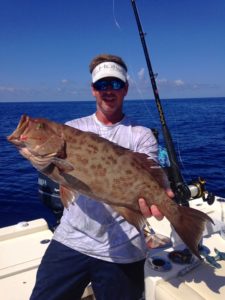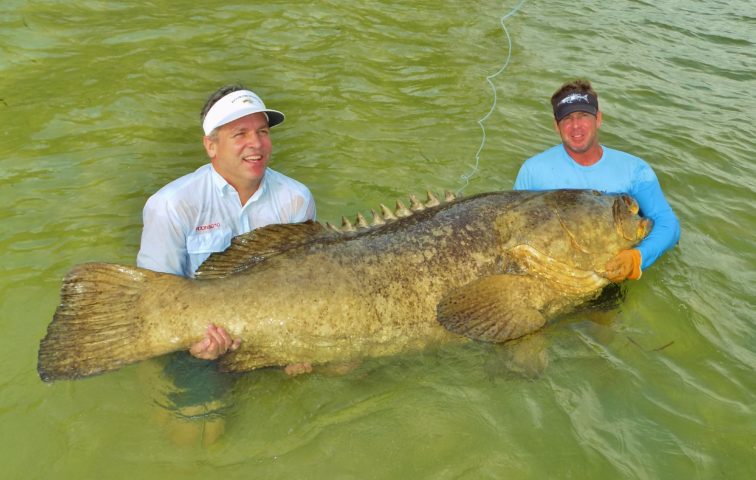American Red Snapper fishing
So for this week’s edition I thought I’d share a fishing trip with ya. You can understand it’s not that frequent that we get to go “fun fishing” as guides and even less common to get out after American red snapper. My Pathfinder 24TRS is an amazing fishing platform and can hold her own in a heavy chop and rough swells. Those seas are not what I’d call normal operation but it’s nice to know she can take “less than optimal” conditions. Needless to say, there are lots of stars that need to align to allow one to get out to (and more importantly back from) the 100-150 foot range needed to target ARS.
Safety First
A good practice when you don’t normally make those long runs is to file a float plan with someone you trust with departure and arrival times and an approximate position you plan to visit on your trip. That’s just the minimum. It’s better to have one of the emergency positioning beacons like an Emergency Position Indicator Radio Beacon (EPIRB) or a Personal Locator Beacons (PLBs). These devices are small radio transmitters, connected to a global government-run emergency network, which is used worldwide to alert Search and Rescue agencies in the event of a dire emergency. A cheaper alternative is a device similar to the SPOT Satellite GPS Messenger unit which works like a sat phone text messenger. I think you get the point about being a safe and prepared captain of your vessel.
Time to Fish!
Kelly and I set plans and waited for a clear shot to run out 50 miles. Finally, all stars aligned and last weekend we were able to make our first ARS run. We grabbed my son and my buddy Mike, loaded the coolers with ice and put some distance between us and the sunrise. Somewhere around 8 AM I backed off the throttle and settled down enough to look at the bottom… more importantly look for fish. Our first 10 min produced a school of small mahi mahi. If you encounter these guys, it’s important once you get one hooked to keep a hooked fish in the water at all times and swimming around the stern on a short leash. The others will hang around long enough to boat a few more before they move on. They were a lot of fun but remember… I was looking for snapper so we put a few in the box and moved on.
After a few stops, we finally find a good wad of fish and a few drops produced some really nice red grouper. “That’s getting closer, but still not red snapper,” I tell my buddy Mike. Onward my friend…Our next stop yielded a few more red grouper and a really nice scamp that measured a whopping 28 inches! “Still not red snapper Mike,” moving on! So now Kelly is at the helm for a bit and a few spots later she puts us on red gold! I drop down first and before it gets to the bottom I’m on! Oh yeah! I think to myself “This feels like a snapper!” Sure enough I soon see that red and white beauty I’d been dreaming about for so long. I quickly flip it in the boat and check the size on the ruler and 15 inches… dangit! It’s too short, back to the blue with you my friend. By now everyone is bowed up with fish and quickly have enough to fill our limit of two per angler. I got to say that was a fun trip and glad everything worked out as planned. We got a few snapper over 22 inches and a few of our red grouper topped out at 30 inches. So needless to say we pointed the bow of my pathfinder towards home before the afternoon storms hit. With red snapper season ending soon, you have limited time to get out and box a few reds for your dinner table. It will be well worth the effort and time invested!
Tactics
Our best red snapper bite was in about 140ft of water. When searching for fish, look for a mass of red on your bottom machine. At times, we were marking a solid 30ft of fish. The lighter blues and yellow indicate more of baitfish and lane or vermillion snapper. Don’t waste too much time on that spot but check around that area for the red mass as mentioned. Once we found the school, we dropped live pinfish on conventional gear with 5-6oz of lead with a traditional bottom rig. My conventional gear is spooled with 50lb mono with a 50lb flouro leader. We also did well using cut mullet on a 1oz jig head on Spinfisher 6500 spinning tackle.
Folks, that’s gonna do it for me this week. Bookings for our fall season are already filling up and if you want to get your FIX on… give me a call @ 941- 698- 03 23 or… find us on Facebook, Instagram, You tube or our web page @ www.floridainshorextream.com.

Tight lines and y’all stay safe!!
Capt Jesse McDowall
941-698-0323 or jesse@fixcharters.com






